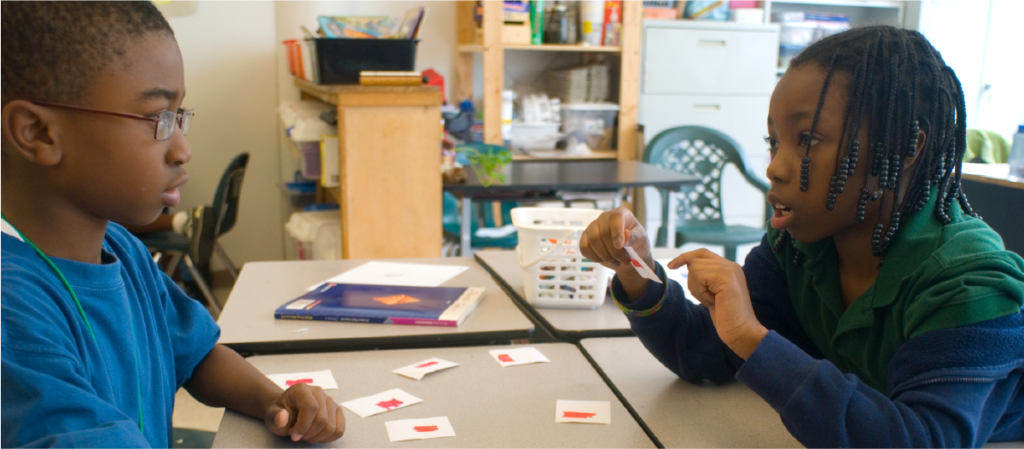
“Before you speak, listen.”
—William A. Ward
As I listen in on the student conversations occurring around the classroom, I notice that my students have a firm grasp on the basics of listening and speaking. They turn their attention toward the speaker and maintain a calm body. They lean in to listen, using supportive facial expressions, and sustain their attention on the speaker. When they speak, they take turns and speak at the right volume. Yet I wonder: Are they listening with purpose? Are they making meaning from what they hear? How can I help them strengthen and deepen these listening and speaking skills?
Social interaction is at the heart of listening, speaking, and making meaning. What better way to strengthen these skills than to use interactive learning structures? An interactive learning structure provides students with opportunities to practice listening and speaking skills. It also creates movement and interaction around content and so can be woven in throughout the day.
Be intentional about strengthening your students’ speaking and listening skills. Start out by trying one of the following interactive learning structures:
As students learn how to listen for understanding, exchange ideas, summarize, paraphrase, and ask and answer questions, you will notice their responses are more thoughtful and connected to the content that the speaker shares. Your students are making meaning from the conversations and building stronger communication skills.
For additional information on strengthening students’ speaking and listening skills, check out The Language of Learning: Teaching Students Core Thinking, Listening, and Speaking Skills.
Julie Kelly is a consulting teacher for Center for Responsive Schools and a contributing author for Empowering Educators: A Comprehensive Guide to Teaching Grades 3, 4, 5.